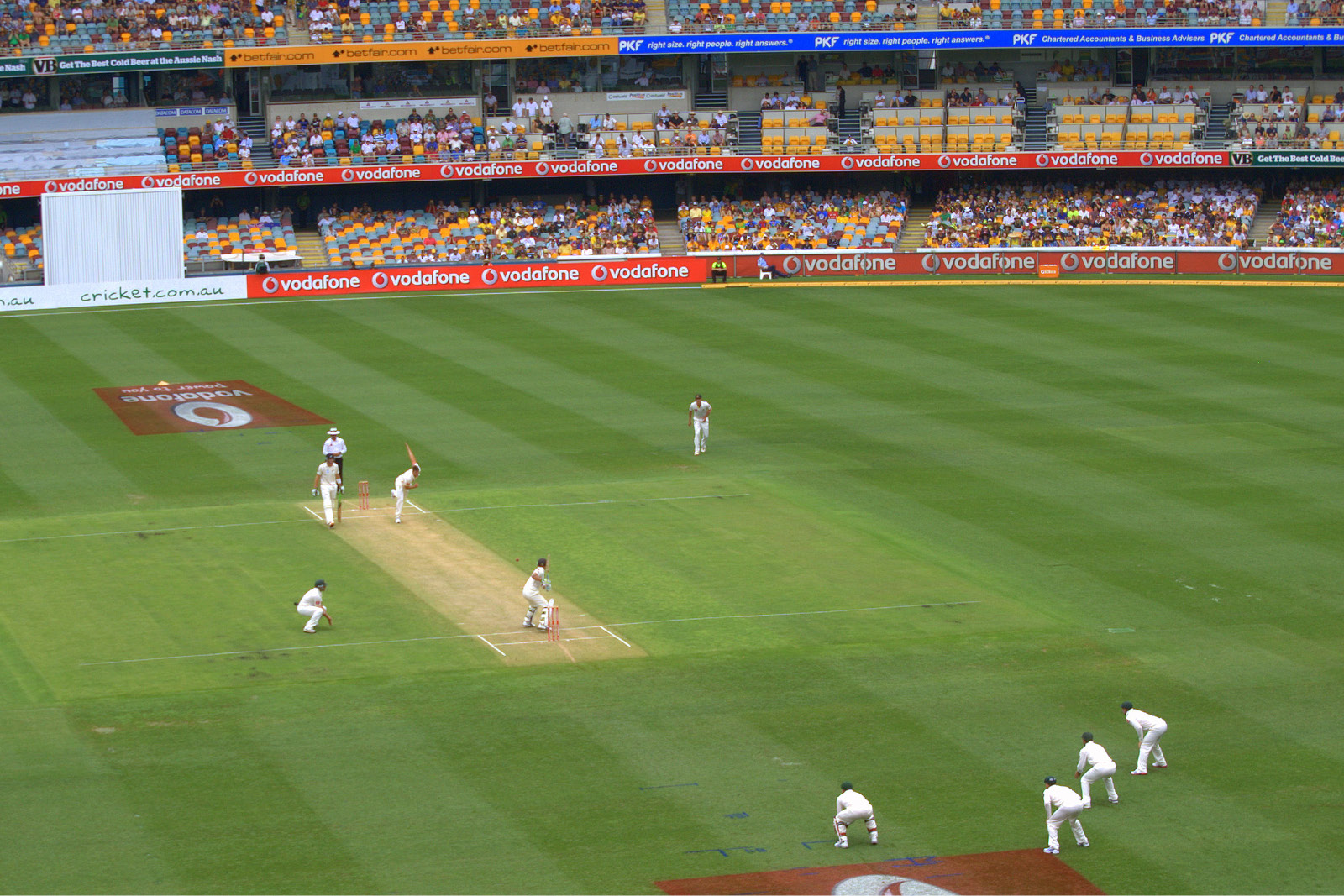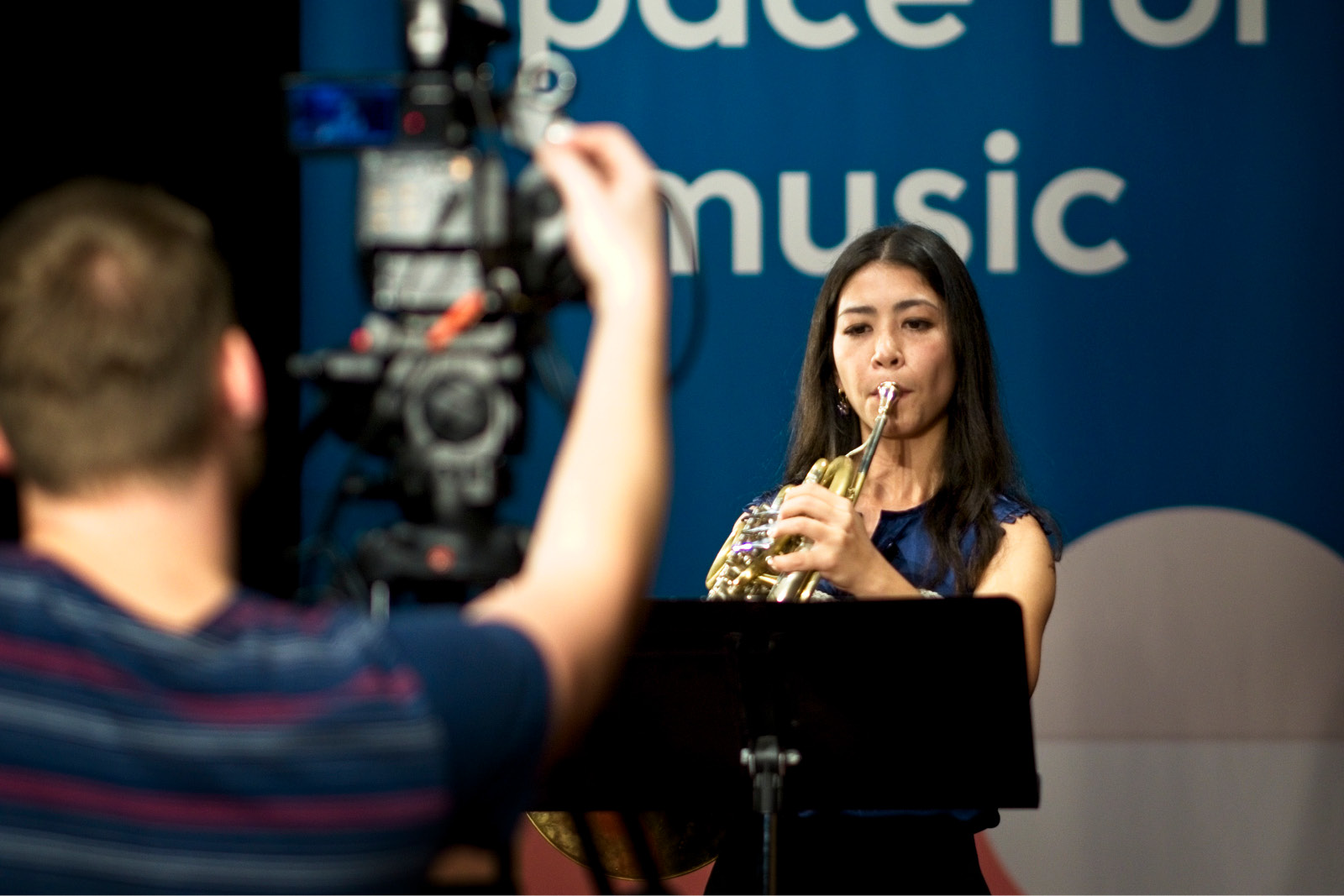The thing with being a classical musician who also really loves sport – cricket and Australian football in my case – is you tend to be in a sort of minority. In the absence of available metrics, I imagine the engagement rate is probably similar to that of professional athletes who dig classical music in their free time: yes there’s crossover, but you’d struggle to mount an argument that they are intimately connected.
 Australia vs New Zealand, Day One, First Test, 2011. Photo Wikimedia Commons
Australia vs New Zealand, Day One, First Test, 2011. Photo Wikimedia Commons
Which could explain why people tend to view the two disciplines as opposites: one is the modern reincarnation of the Ancient Roman Gladiator, the other, the Bard. But as I have previously explored in Limelight Magazine, the two aren’t necessarily that far removed.
The 2020 COVID-19 situation has shut both stadiums and concert halls around the world, and as the initial shock subsides, both industries are now asking questions regarding the short and long-term solutions to the seismic shift. Whilst sport broadcasters have been able to fill the gap with match replays and sportspeople continue training in isolation, musicians have taken to the internet in the form of live-streaming from whatever social media platform and whatever available technology they feel comfortable with.
For musicians, reeling from the sudden loss of their creative outlets and income streams, this is a way to help counter the shock. But whilst live-streaming may prove a band-aid solution to the first aspect, it has yet to provide any stability for the much more pressing second issue.
 Adelaide Symphony Orchestra horn player Emma Gregan in the studio for the ASO Virtual Concert Hall. Photo © Adelaide Symphony Orchestra
Adelaide Symphony Orchestra horn player Emma Gregan in the studio for the ASO Virtual Concert Hall. Photo © Adelaide Symphony Orchestra
But what are the options? From the financial perspective, the goodwill of digital listeners to sponsor individual streams through PayPal accounts was a semi-reliable stimulus package for some musicians. But once that goodwill runs out, we will need to find a value-driven way to seriously monetise the adopted system in order to replicate the ticket-purchase model it stands to replace. Just as artistic support and development has historically been funded by aristocrats and patrons, our future could be fortified by venture capitalists of the tech industry. What we need right now is for innovators and creatives to figure out how tech development, marketing, and classical music can be combined into a satisfying, user-friendly product.
And what does this have to do with sport? Well perhaps the better question is: what can we learn from sport – and in particular, sports coverage?
An example of what is possible when innovation meets product is cricket. Cricket (for those who didn’t grow up in the colonies) is a remarkable game, with test matches played for five straight days with around eight hours of playing time daily (including ‘tea’ and ‘lunch’ breaks). For cricket lovers, these games provide gripping drama across not just a game, but an entire series; whilst for those who haven’t seen it before, not much seems to happen in that time. To the uninitiated, it is a remarkably strange examination of human behaviour – akin to watching grass grow perhaps (and a hefty amount of the commentary during the cricket is in fact, about the grass on the pitch and how it grows).
Cricket has been played internationally since the late-19th century, and was first televised in 1937. It was not, however, until the late-1970s, when Australian businessman Kerry Packer launched the World Series Cricket format and threw the international cricket world into array, that cricket became crucial summer viewing. In 2018, Australian broadcasters Seven and Foxtel bought the broadcasting rights from Cricket Australia for $175 million per year. In the space of four decades, cricket went from an unwatchable bore, to one of the highest watched television programs in the country. All for a game where discussing the length of grass is regular fare.
So what can we learn from this? How did a game where titillation is a rarity become so financially viable? For those who enjoy attending or viewing any sporting event around the world, it is clear that the two mediums of consumption – physical attendance and televised viewing – yield different experiences. The product on the field might remain the same, audience engagement changes dramatically. Whilst the atmosphere of being present at a live game cannot be replicated, the production and presentation of televised sports instead includes:
- Better views and close-ups of players
- Expert commentary before, during, and after
- Rundowns and explanations of what happened, and why it was great
- Enhanced visual cues that explain certain plays or moments
- Live replays of highlight moments
And perhaps most intriguingly:
- The fact that you absolutely have to watch it when it happens, because once it has finished and the moment gone, it doesn’t really impact you in the same way. It has ‘ephemeral interest’ – something that is valuable only when engaging with it in real-time (or soon after), meaning it continually generates demand for new product (i.e., more games).
Televised sport does not intend to merely capture the live experience without adding value unique to the product. It does not claim to offer the same qualities as the live experience – the electricity of the stadium, the proximity to the players, the realness of every moment, the community with the spectators. Instead, it offers a completely separate experience – based on the exact same content.
This is our opportunity. I have previously espoused the potential of live-streaming as a new medium for classical music (alongside performance and recording) – and thankfully, we have an excellent existing model to draw inspiration from in live-sport presentation. Live-streamed concerts and those who create them need to think about how they can develop a unique, high-quality product that engages with listeners directly.
Picture a concert performance, where the performer speaks directly to the audience between pieces or movements, explaining their relation to and understanding of the music. Perhaps it is delivering feedback after the work is completed and giving the audience unprecedented insight into the mind of the performer. No longer will the audience need to choose whether they see the face or the hands; the back or the front of the conductor – now they can have both by selecting which camera to watch. Digital audiences can tweet or chat with performers live, asking questions to be answered after the performance. Memorable parts of the music can be captured for later, scores can be projected, educational aspects can be encouraged. The whole ritualistic aspect that is perceived as elitist and damaging to the industry can be entirely broken down by the simple fact there is no social pressure when listening in your own space; no one will hiss at your for applauding, looking up a piece on Wikipedia (that could be linked in the chat function), or even changing channels. The possibilities are both open-ended and exciting.
Late last year I called for the rebranding of classical music. If we play our cards correctly – and we need to be part of the discussion now – we have a product in live-streaming that can finally offer a return to intimate experiences that allow the 21st century audience to connect how, and when they want.











Comments
Log in to join the conversation.